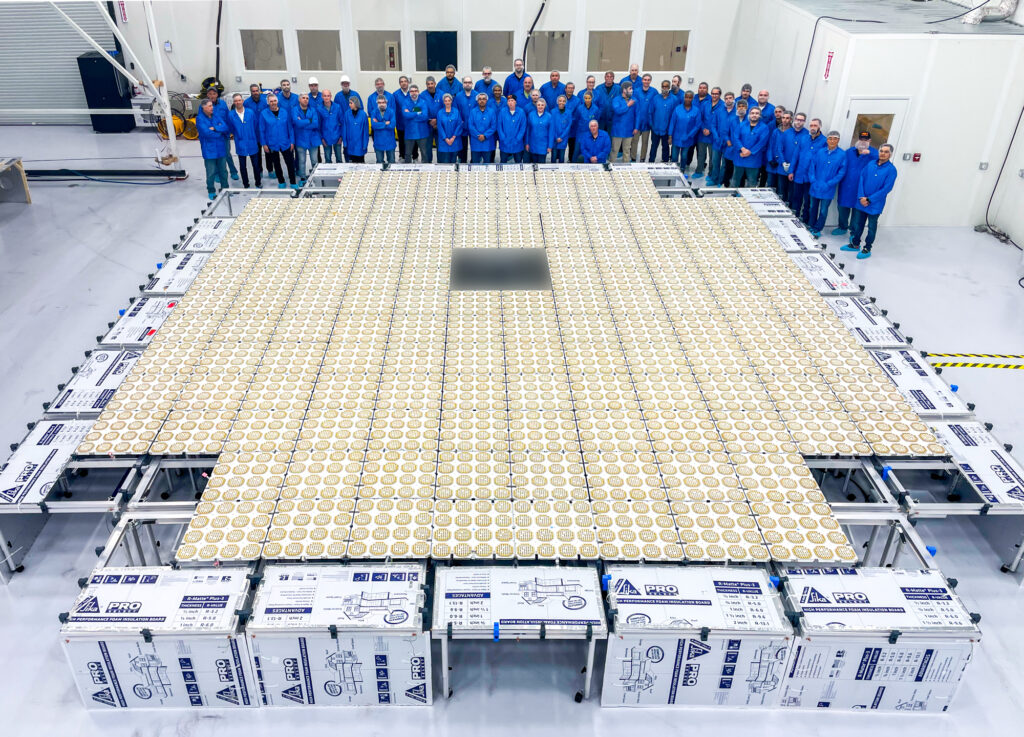Space-based cellular connectivity company AST SpaceMobile said that it has repeatedly achieved download speeds of more than 10 Mbps over LTE as it tests its LEO BlueWalker 3 satellite with unmodified, commercial smartphones on the ground.
AST SpaceMobile used leased AT&T spectrum and Nokia Radio Access Network gear for the testing, which was conducted in Hawaii in June using multiple off-the-shelf smartphones. The company reported that it tested both data speeds and voice calls to AT&T employees, and that it saw initial LTE speeds up to 10.3 Mbps.
AST said that it is continuing to evaluation the capabilities of its BlueWalker 3 satellite and that it plans to move 5G cellular testing next.
AST SpaceMobile plans to support 3GPP-based cellular service and offer wholesale access to its satellites to mobile carriers who want to offer their customers satellite-based connectivity for emergencies or when they are otherwise out of reach of terrestrial cellular networks. AST said that it already has “agreements and understandings” with more than 35 mobile network operators including Vodafone Group and Rakuten (which are also investors in the company), Orange, Telefonica, TIM, Telstra, Etisalat, Africell and others.
“AST SpaceMobile’s space-based cellular capabilities are designed to be a critical extension for cellular communications. In addition to supporting basic voice and text that we expect from phones, it would also enable users to browse the internet, download files, use messaging apps or stream video,” said Abel Avellan, chairman and CEO of AST SpaceMobile. “Achieving this milestone from an unmodified, standard cell phone on the ground connecting through our low Earth orbit satellite is another groundbreaking moment in telecommunications history and an important step toward AST SpaceMobile’s goal of bringing broadband services to parts of the world where cellular coverage is either unreliable or simply does not exist today.”
Earlier this year, AST made arrangements with AT&T for a spectrum leasing deal in which AST SpaceMobile would lease AT&T’s spectrum in the 700 MHz and 850 MHz bands to provide supplemental-coverage-from-space (SCS) services to AT&T subscribers. AST also completed what it called the first satellite-direct-to-phone call, achieving a direct voice connection from space to an unmodified Samsung Galaxy S22 smartphone. The test call used AT&T’s Band 5/850 MHz spectrum. The call was placed in Midland, Texas and was received in Japan by Rakuten, which provided engineers for the preparation and testing for the trial.

Tommi Uitto, president of Mobile Networks at Nokia, called the most recent Hawaii testing “an important milestone that will see real mobile broadband connectivity delivered directly to smartphones from space via AST SpaceMobile’s platform.”
AT&T’s Head of Network Chris Sambar said that “successfully reaching double-digit download speeds during satellite-to-smartphone testing takes us one step closer to ensuring people across the United States will be able to stay connected no matter their location.”
Alberto Ripepi, who is chief network officer at Vodafone said that the carrier “[looks] forward to bringing this capability to our customers in the hardest to reach areas of Africa and Europe.”

